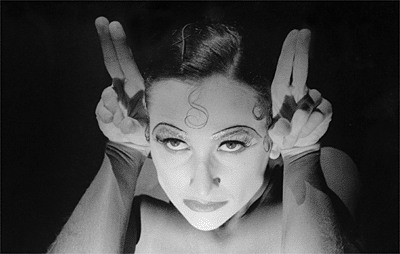VERA MANTERO: THREE SOLOS
1. Perhaps she could dance first and think afterwards
2. Olympia
3. One mysterious Thing, said the e.e. cummings*
Nov 1, 7pm
Kiasma Theatre
 Choreography and dance: Vera Mantero
Choreography and dance: Vera ManteroVera Mantero (b. 1966) is part of the generation of choreographers who instigated the term "new Portuguese dance" in the late 80s and early 90s. A brilliant dancer and performer, Mantero is one of the most internationally acclaimed of the dancers to have emerged during that period. She was classically trained and danced with the Gulbenkian ballet in Lisbon for five years. She began her career as a choreographer in the Gulbenkian workshops in late 80s and immediately received international interest. She studied acting, contact improvisation and voice for a year in New York, after which she decided to leave classical dance behind her for good.
Vera Mantero achieved her international breakthrough in 1991 with the improvised solo Perhaps she could dance first and think afterwards, titled loosely after a line in Samuel Beckett's play "Waiting for Godot". The title reflected the great doubt and nearly paralysing lack of faith she felt towards herself as a dancer and the art of dance in general. The work was commissioned by a Belgian festival and its creation was something of a coincidence. Mantero has said that her works are too much a product of coincidence. She would prefer to be more organised, but this requires faith. Her problem is a lack of faith: " To me, art and being creative are the most interesting things in life, but it seems that every time I start to create art, I immediately lose my faith in it. And finally, I lose my faith in life itself. My relationship with dance is about the questions what does dance communicate? what can I say with dance? what am I saying while I'm dancing?" Her latest piece for a group answers these questions: she dances to fight the silence and the gradual crumbling and death of spirit and culture.
In this solo performance Mantero is moving towards the area of performance art. In the solo piece Olympia, from 1993, she puts herself in Manet's Olympia, becoming an object to be gazed at, simultanously reading out a text on cultural theory by the French painter. One mysterious Thing, said the e.e. cummings* (1996) is a perplexing, minimalist tribute to Josephine Baker. Mantero studied Baker's personality and image closely and condensed her essence and art into movement. The works of Vera Mantero are confusing and interesting because her "dance of images" persistently keeps on making visible the private collections of familiar absurdities and archives of public secrets, the eerie contents of which most of us would prefer to stay unmentioned.
<<<